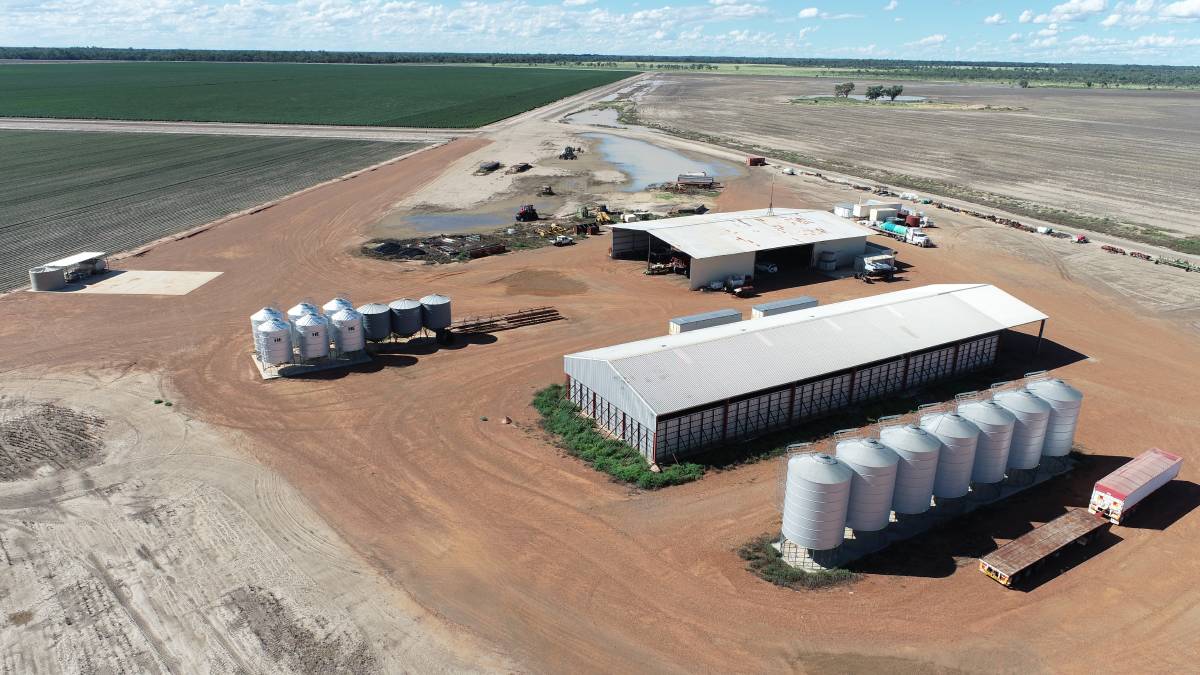



Article by: Hari Yellina
On Queensland’s NSW border, Martin and Karen Sullivan have built something like an agricultural fortress. Tooroora, their 6677-hectare (16,498-acre) property close to Dirranbandi, has been transformed into a drought-resistant operation that grows cotton, fodder, grain, beef, wool, and lamb. It’s unlikely that this will happen again. Mr Sullivan explained, “You can’t build anymore; you have to buy in now because that’s just the way it is with water licences in the lower Balonne basin.” Tooroora, which sits on the Culgoa and Balonne Rivers’ floodplains, is one of the first towns south of St George to extract regulated and harvested water during a flood.
780 hectares of protected irrigation, divided into nine fields, lie at the centre of Tooroora. The Sullivans are currently farming 530 acres of cotton and 250 acres of mung beans, both of which are included in the transaction. In fact, it’s nearly like having two farms in one. The 4028ha (9953 acres) of dryland terrain that surrounds the irrigated region, according to Mr. Sullivan, grew wheat, barley, and chickpeas in the winter. It was then left fallow in the summer. The district receives 450 mm of yearly rainfall on average, but the deep grey silty loams are generally refilled by a couple of floods each year. There was already a complete moisture profile in place, ready to plant the winter crop in 2022.
Whoever bought the property would get a run-up start, Mr Sullivan said. “The cotton and mung beans will be ready to pick and harvest about a week or 10 days after the auction date, so whoever buys it will be straight into production,” he said. “They’ll be planting wheat a week or 10 days after it as well. Every acre has a choc-a-block moisture profile. It’s just a bit of a lay-down misere to get an absolute cracker of a wheat crop this year.” If that wasn’t enough, there’s a livestock arm to the business as well. The family trades around 1200 steers plus 5000-6000 lambs a year. “I try to background cattle, preferably on agistment,” Mr Sullivan explained, “then I bring them in about July and put them on oats or forage and send them off as feed-on steers.” “The sheep go through the same procedure.”
During droughts, cattle bunkers and a sheep feedlot keep the operation running. Mr Sullivan explained, “There is enough feed on the farm to keep the process moving forward, rather than just pulling up because it’s dry.” Even so, Mr. Sullivan isn’t content with simply taking the lamb. There’s more to come. “I like wool, therefore I choose Merinos because they provide a bit of a safety net if the lamb market tanks,” he explained. To that aim, Tooroora has its own shearing facility with five stands. There are sheep and cattle yards, too, with the latest in computerised drafting and weighing technology, which Mr Sullivan claims has cut staffing requirements in half and improved stock quality dramatically. “The other day, my wife and I drafted 800 steers by ourselves and barely spoke to each other – the machines did everything for us,” he remarked.
The five-bedroom homestead on the river’s edge includes sweeping enclosed verandahs, a modern open-plan kitchen with butler’s pantry, wide lawns and gardens, a floodlit tennis court, and a swimming pool, among other creature pleasures. Despite the fact that the Sullivans have been running Tooroora with just four people, there is enough room for a large number of workers or tourists. On the river’s edge, there are two more timber residences, each with three bedrooms and offices. There are five-bedroom air-conditioned shearers’ quarters and five-bedroom air-conditioned donga-style accommodation with kitchen that are totally self-contained.